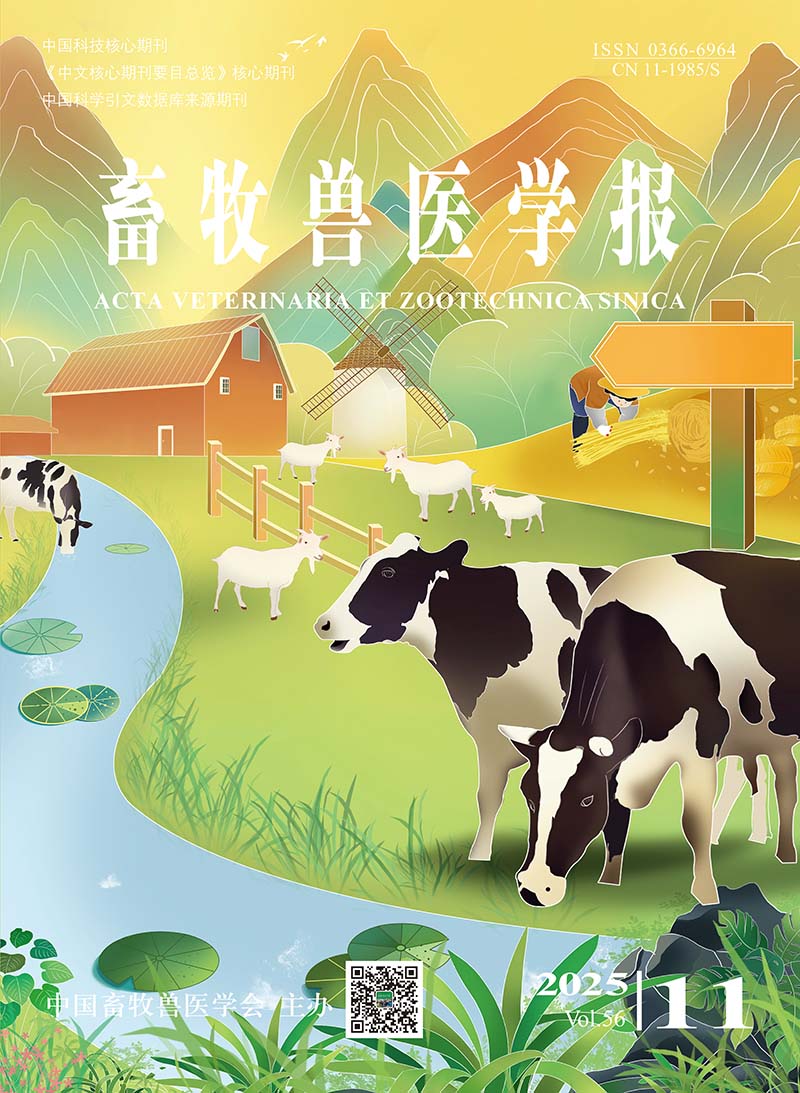-
Study on the Difference of Intestinal Microbiota of Altay Sheep with Different Growth Rates
- HOU Meng, LIU Yigang, YE Mengjun, MAIMAITIYIMING·Maimaitili, MUNIRE·Tusong, WANG Jia'nan, KAIMAIREYA·Aihemaiti, TUREGULI·Alimu, WANG Jinquan
-
2020, 51(9):
2177-2186.
doi:10.11843/j.issn.0366-6964.2020.09.015
-
 Abstract
(
303 )
Abstract
(
303 )
 HTML( )
HTML( )
 PDF (2419KB)
(
401
)
PDF (2419KB)
(
401
)
-
References |
Related Articles |
Metrics
In this study, in order to explore the relationship between intestinal microbiota and sheep growth and development, the differences between the intestinal microbiota of Altay sheep with different growth rates under the same feeding conditions and changes in intestinal microbiota species composition after affecting growth rate through diet were explored. Among the 300 lambs at 6-month-old, fast-growing and slow-growing male Altay sheep were screened according to the top 10% and the bottom 10% of daily weight gain, and were defined as high body weight group and low body weight group, respectively. Twelve animals were randomly selected from the high body weight group and they were divided into a high body weight restriction feed group (HR, n=6) and a high body weight control group (HC, n=6). Twelve sheep were randomly selected from the low body weight group and they were divided into a low body weight add feed group (LA, n=6) and a low body weight control group (LC, n=6). After 7 days of pre-feeding, the HR, HC, LC, and LA groups were fed diets with 75%, 100%, 100%, and 125% of energy intakes, respectively. And feeding trials were continued for 30 days. At the end of the feeding period, the animals were weighed and slaughtered to collect intestinal contents from the same site, DNA was extracted from these samples, and detection was performed using the Illumina Miseq sequencing platform. The results showed that under the same feeding standard, the composition of intestinal microbiota of Altay sheep with different growth rates was different. The abundance of Firmicutes, Actinobacteria, Saccharibacteria, Verrucomicrobia and Bifidobacteriaceae in the HC group was higher than that in the LC group, and the abundance of Proteobacteria and Paeniclostridium in the LC group was higher than that in the HC group. In the experiment of regulating the growth rate through diets, the low-energy diet significantly reduced body weight gain (P<0.05) of HR group; and the high-energy diet significantly increased body weight gain (P<0.05) of LA group. Regardless of promoting or inhibiting the growth rate, the abundance of intestinal Firmicutes and Bacteroidetes increased, and high-abundance Saccharibacteria always existed in the group with faster growth rate, while high-abundance Paeniclostridium always existed in the group with slower growth rate. A comprehensive analysis of the results of the two parts of the experiment showed that the abundance changes of Firmicutes and Bacteroidetes in the Altay sheep may be related to the diet and growth rate. The abundance change of Saccharibacteria is positively correlated with growth rate, and the abundance change of Paeniclostridium is negatively correlated with growth rate.






